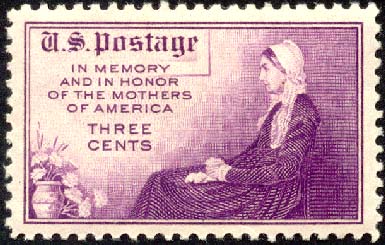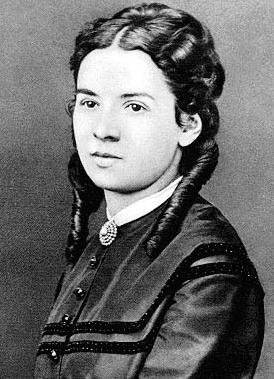
“Some boys kiss me, some boys miss me
I think they’re ok
But it’s the boy with the cold hard cash
Who makes my rainy day”
(“Material girl” 1985).
Madonna Louise Ciccone Ritchie
turned 50 yesterday. Though she celebrated her birthday with a private party in the UK, Madonna shows little sign of letting up. The pop icon will kick off her “Sticky & Sweet” world tour with the first of more than 40 dates next Saturday in Cardiff. Her most recent album “Hard Candy” (which featured collaborations with Timbaland, Justin Timberlake, Pharrell Williams, and Kanye West) debuted at number one in the UK albums chart, but was panned as mediocre by many reviewers including
Pitchfork who said no-one involved in the project “is anywhere near their creative peak.”
Having sold 120 million albums and 40 million singles, Madonna can well afford to ignore the occasional poor review. Despite being the second top selling female artist of all time (only Barbra Streisand is ahead of her), it is likely she would perhaps now prefer to be known as much for her
HIV activism,
clothing line,
children’s books, and
acting and directing career. Madonna’s success over 25 years is based a refusal to rest on her laurels and the uncanny ability to periodically re-invent herself anew in a way that consistently connects with mass audiences.
She was born
Madonna Louise Ciccone on 16 August 1958 in the small town of Bay City on Michigan’s Lake Huron. She was named for her mother Madonna Louise Fortin, of French-Canadian descent. Madonna snr married Silvio “Tony” Ciccone. Ciccone’s parents moved to the US from Italy's Abruzzi region in the 1920s to work in Pittsburgh’s steel mills. Ciccone was upwardly mobile and studied engineering at college. He moved to Detroit to work in the automotive industry and also served in the military. Madonna, the third of six children and the eldest daughter, would get much of her own ambition from her father.
Silvio ensured his children were brought up as Catholics and learned how to play a musical instrument. Tragedy struck when her mother died when Madonna was just six. Tony married his housekeeper and had two more children with her. After high school, Madonna won a dance scholarship to the University of Michigan. She left after a year and moved to New York. Madonna drifted from job to job, including serving donuts and nude modelling, until she joined the
Alvin Ailey Dance Company.
After a couple of years learning the dance trade, she
went to Europe in answer to French disco artist Patrick Hernandez's offer that she work as a back-up singer and dancer. In Paris she met Dan Gilroy who became her boyfriend and taught her how to play the guitar and drums. When the couple returned to New York, they put together the band, The Breakfast Club, where she played drums, wrote songs and sang. In 1980 she teamed up with Steve Bray to form the band Emmy and was eventually signed up as solo artist to the record label Sire.
In 1982 she recorded “Everybody” which was a club hit in the US. A year later she crossed over into mainstream pop when she worked with New York DJ
John “Jellybean” Benitez. The pair struck up an important relationship, both personally and professionally. Together they released “Holiday” and “Borderline” and Madonna was on her way to becoming a star. The first three hits would appear on her eponymous debut album released in 1983.
Madonna released her second album, “Like A Virgin” in 1984, with the title track hitting the number one spot on the music charts. She was quickly renowned for her fashion as much as her music with her signature look of bleached hair, lace tops and short skirts over capri pants. As
VintageBlues puts it, she “burst onto the scene clad in yards of lace, beads, crosses and the infamous Boy Toy belt, singing about such taboos as virginity and unwed mothers.”
But Madonna wasn't just content with being a star of music and fashion. A year later, in 1985, she made her
first forays into the movie business. She landed her debut role as a nightclub singer in Vision Quest and followed it up as the lead in Desperately Seeking Susan. The singles from both of the films became hits and the filmmakers renamed Vision Quest in its European release to cash in on Madonna’s hit “Crazy for You”.
By then, the world was crazy for Madonna. Her third album “True Blue” took her into unprecedented territory being a smash hit with four top five single and also garnering critical acclaim. Madonna had a hand in writing or co-writing all songs on the album. It didn’t hurt album sales that “
Papa Don’t Preach” caused huge controversy with its music video depicting a pregnant young teenage mother. Madonna dedicated the album to new husband actor Sean Penn whom she called in the liner notes “the coolest guy in the universe”. But Penn’s penchant for violence wasn’t so cool and the pair split up after he was charged with felony domestic assault.
Nevertheless, Madonna’s career continued to go from strength to strength. She riffed on her failed marriage in her fourth album “Like a Prayer.” It was hailed by
Rolling Stone as “far and away the most self-consciously serious album she's made” and “more interested in exorcising demons than entertaining fans.” But the fans were entertained all the same, and the album sold seven million copies worldwide.

Her ability to subvert dominant gender codes to assert her own power and agency proved too much for many male-dominated organisations. In 1990, MTV banned the bondage-themed video for “Justify My Love” as being too sexually explicit. That same year, Pope John Paul II called on Romans to boycott Madonna’s “Blond Ambition” show. This was the tour that introduced Jean-Paul Gaultier's conical bra outfit and featured the singer simulating masturbation during Like a Virgin. The Vatican's newspaper, L'osservatore Romano,
described the show as "a complete disgrace". Officials in Toronto also threatened to arrest her for her on-stage masturbation routine.
Madonna continued to make hit records in the 1990s, though she did not quite match the phenomenal success rate of the previous decade. In 1996, she underwent a serious image makeover when she was cast in the coveted role of Evita Peron in Alan Parker’s adaptation of the Lloyd Webber and Rice musical “Evita”. While the film was criticised for failing to accurately portray the Argentinean leader, Madonna was praised for her assured performance. The
New York Times said her performance “which consists of cutting a glamorous swath through crowded settings and passionately feigning the emotions on the soundtrack, is legitimately stellar and full of fire.”
In real life, Madonna’s fire was taken on more spiritual dimensions. In a candid and wide ranging review of her career with
Larry King in 1999, Madonna talked about her links with the Jewish mystical tradition of Kabala. Madonna first got into Kabala through a Jewish friend when she was heavily pregnant. Madonna hinted to King why she was attracted to it “It is considered traditionally the only people that are supposed to learn the Kabala are men, and they have to be over the age of 42,” she said. “Look, if this information is so enlightening and so important and can help other people, why are we limiting it to teaching it just to men, Jewish men who are passed the age of 42?”
Madonna herself passed the age of 42 as the new century approached. She celebrated Y2K by remarrying, this time to British film director Guy Ritchie whom she met through Sting. Ritchie became the step-father of Madonna’s daughter Lourdes who was born in 1996, and whose father was Madonna’s personal trainer Carlos Leon. Madonna and Ritchie’s attempt to adopt Malawian boy David Banda in 2006 was the subject of much controversy over allegations that the couple breached local adoption laws. There was also the accusation the boy's biological father merely thought he was being sent out for fostering. Madonna claimed it was an act of charity to “help one child escape an extreme life of…poverty”. However, academic
Yvonne Roberts was one of many to question the move, saying Banda had become a public relations vehicle before he even learned to walk.

Meanwhile back in the recording studio, Madonna continued to pump out hit records showing little sign of slowing up. Her reputation as a shrewd businesswoman was recently enhanced when she severed ties with long-term record label Warner Brothers to
sign up with Live Nation, a company that until recently specialised in music tours. As well as earning a reported $120 million over the life of the agreement, Madonna appears to be among the first to recognise which way the music industry was heading, meaning she will spend more time performing on stage rather than in the recording studio. And if the
Rolling Stones are anything to go by, Madonna will be gracing the venues of the world for some time to come.
 TWENTY-THREE Australians are among the 600 people who have
stumped up a cool $US200,000 each to be among the first space tourists with
Virgin Galactic. The flights are expected to take place at the end of next
year after Virgin test flights prove successful and the passengers undergo
basic space training.
TWENTY-THREE Australians are among the 600 people who have
stumped up a cool $US200,000 each to be among the first space tourists with
Virgin Galactic. The flights are expected to take place at the end of next
year after Virgin test flights prove successful and the passengers undergo
basic space training.



















